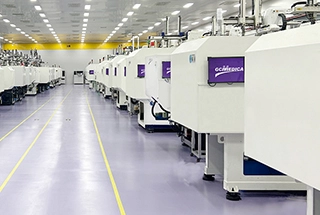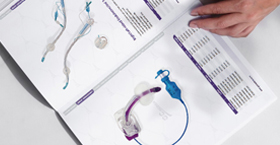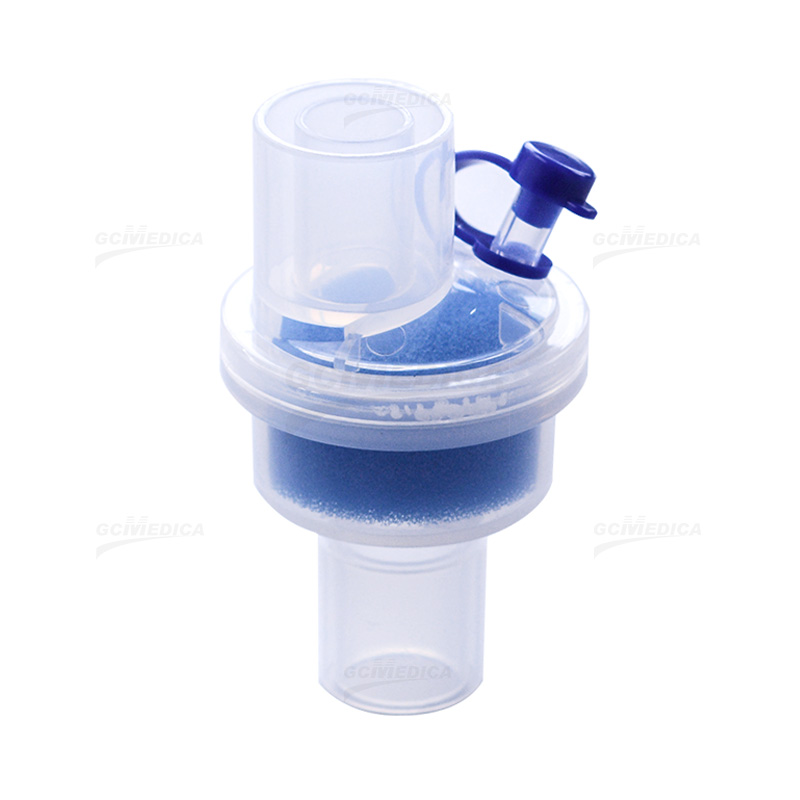Heat–Moisture Exchange (HME) filters can be classified into several major types based on their humidification material, filtration capabilities, and intended clinical application. Understanding these distinctions helps clinicians select the optimal HME filter to balance moisture retention, resistance, dead space, and infection control.
1. Hygroscopic Condenser Humidifiers (HCH)
HCH devices employ a salt‑impregnated sponge or paper matrix that actively absorbs water vapor and heat from exhaled gas. During inspiration, this stored moisture and warmth are released back into the incoming flow. HCH HMEs typically offer high humidification (up to 32 mg H₂O/L) with moderate resistance.
2. Hydrophobic Condenser Humidifiers
These use a water‑repellent membrane (e.g., polypropylene) that condenses exhaled moisture on its surface. The condensed droplets then evaporate into the incoming gas. Hydrophobic HMEs generally provide lower dead space and resistance but may have slightly reduced humidity output compared to hygroscopic types.
3. HME with Electrostatic Filter (HMEF)
Combining humidification and filtration, HMEFs incorporate an electrostatic micro‑fiber filter layer to trap bacteria and viruses (≥ 99.9 % efficiency) while still exchanging heat and moisture. This dual functionality makes them especially valuable in high‑risk infection settings.
4. Foam versus Paper Matrix
Within both hygroscopic and hydrophobic categories, designers may use foam or pleated paper matrices. Foam-based HMEs usually have lower resistance but slightly higher dead space. Paper-based matrices offer more surface area for moisture exchange and often longer effective life.
5. Pediatric and Neonatal HMEs
Specifically engineered for low tidal volumes, these HMEs minimize added dead space (as low as 10 mL) and reduce flow resistance, ensuring safe humidification without compromising ventilation in small patients.
Below is a comparison of key HME filter types:
| Type | Mechanism | Matrix Material | Filtration Efficiency | Dead Space (mL) | Typical Application |
|---|---|---|---|---|---|
| Hygroscopic (HCH) | Salt‑impregnated absorption | Sponge/Paper | N/A | 40–70 | Adult ventilated patients |
| Hydrophobic | Condensation on water‑repellent membrane | Polypropylene | N/A | 30–60 | Portable ventilation, transport |
| HMEF (Electrostatic) | Hygroscopic + electrostatic filter | Paper + Microfiber | ≥ 99.9 % | 50–80 | ICU, high infection risk |
| Foam‑based | Absorption in open‑cell foam | Polyurethane foam | N/A | 50–90 | Low‑resistance needs |
| Paper‑based | Pleated paper moisture exchange | Cellulose paper | N/A | 40–80 | Extended‑use scenarios |
| Pediatric/Neonatal | Miniaturized hygroscopic matrix | Paper or foam | N/A | 10–30 | Neonatal and pediatric care |
Selection Tips
Infection Control: Choose HMEFs when both humidification and microbial filtration are required.
Dead Space Concerns: For patients with low tidal volumes (e.g., neonates), prioritize pediatric HMEs with minimal dead space.
Resistance Constraints: Foam-based HMEs often offer the lowest resistance, benefiting patients who are difficult to ventilate.
Duration of Use: Paper‑based matrices may last longer (up to 72 hours) in less secretion‑intensive settings; hydrophobic models tend to clog more slowly when condensate load is low.
By matching the HME filter type to patient size, ventilator settings, and infection‑control goals, caregivers can optimize airway humidification, reduce work of breathing, and maintain effective pathogen barriers.
Related products
| Heat Moisture Exchange Filter (HMEF) > | |
| Eco-mini HMEF > |

 Français
Français Español
Español Products
Products
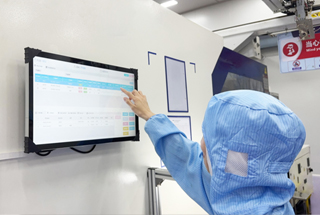
 About Us
About Us




